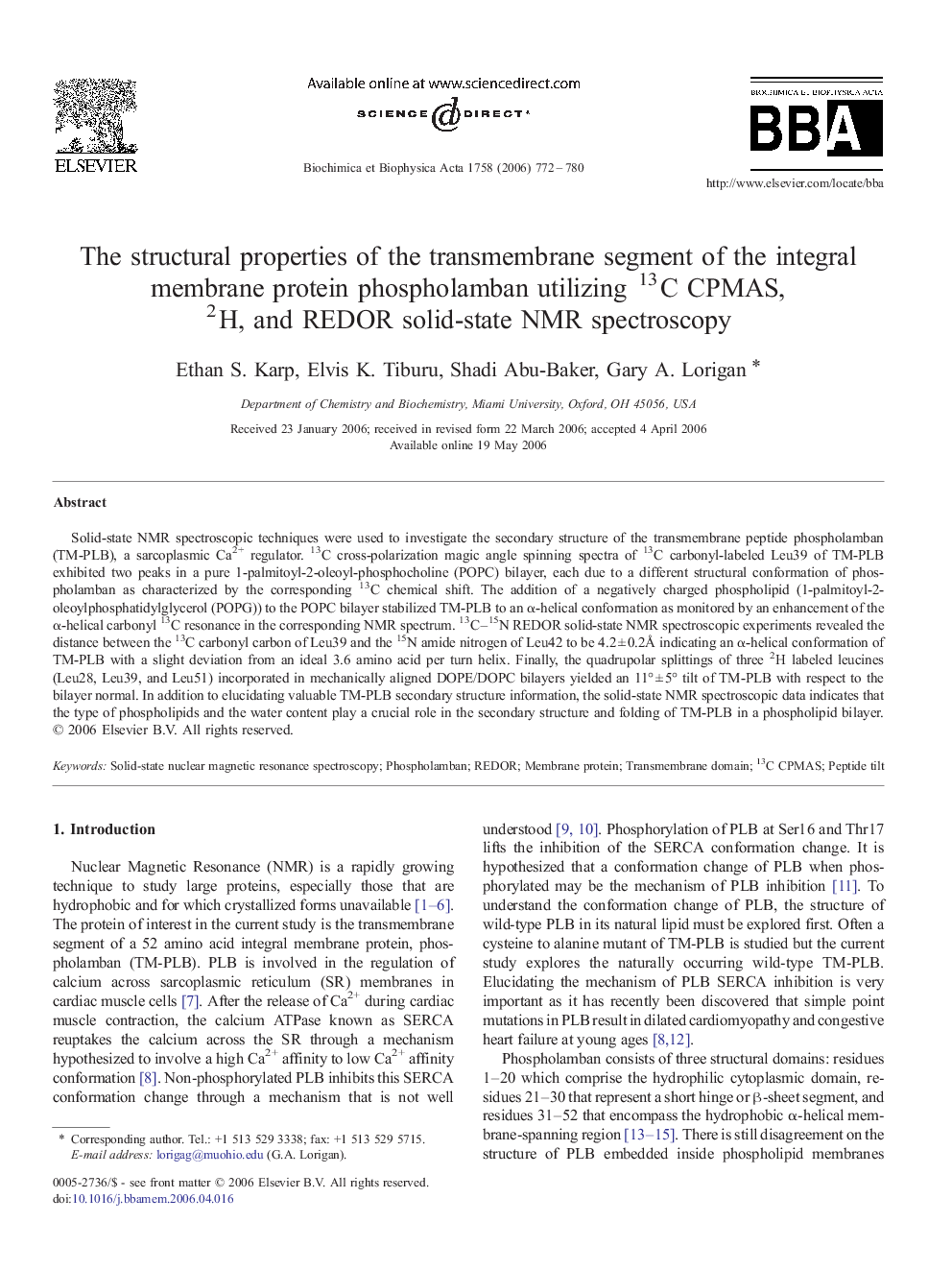| Article ID | Journal | Published Year | Pages | File Type |
|---|---|---|---|---|
| 1946167 | Biochimica et Biophysica Acta (BBA) - Biomembranes | 2006 | 9 Pages |
Solid-state NMR spectroscopic techniques were used to investigate the secondary structure of the transmembrane peptide phospholamban (TM-PLB), a sarcoplasmic Ca2+ regulator. 13C cross-polarization magic angle spinning spectra of 13C carbonyl-labeled Leu39 of TM-PLB exhibited two peaks in a pure 1-palmitoyl-2-oleoyl-phosphocholine (POPC) bilayer, each due to a different structural conformation of phospholamban as characterized by the corresponding 13C chemical shift. The addition of a negatively charged phospholipid (1-palmitoyl-2-oleoylphosphatidylglycerol (POPG)) to the POPC bilayer stabilized TM-PLB to an α-helical conformation as monitored by an enhancement of the α-helical carbonyl 13C resonance in the corresponding NMR spectrum. 13C–15N REDOR solid-state NMR spectroscopic experiments revealed the distance between the 13C carbonyl carbon of Leu39 and the 15N amide nitrogen of Leu42 to be 4.2 ± 0.2Å indicating an α-helical conformation of TM-PLB with a slight deviation from an ideal 3.6 amino acid per turn helix. Finally, the quadrupolar splittings of three 2H labeled leucines (Leu28, Leu39, and Leu51) incorporated in mechanically aligned DOPE/DOPC bilayers yielded an 11° ± 5° tilt of TM-PLB with respect to the bilayer normal. In addition to elucidating valuable TM-PLB secondary structure information, the solid-state NMR spectroscopic data indicates that the type of phospholipids and the water content play a crucial role in the secondary structure and folding of TM-PLB in a phospholipid bilayer.
